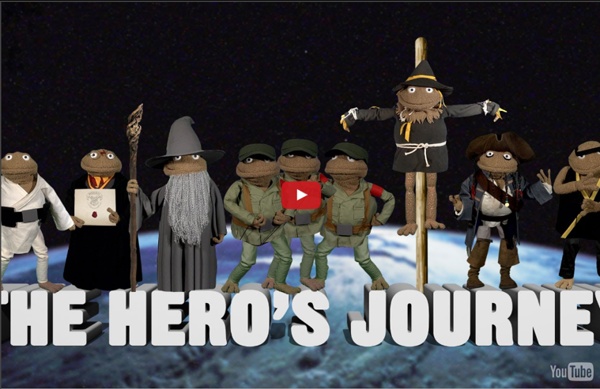



MYTHOS III - 05 - Into the Well of Myth - The Joseph novels and modern myth What makes a hero? 3 TED-Ed Lessons about fiction’s finest figures The hero is one of our most ancient and beloved literary character types. Heroes come in many shapes and sizes, from the classic, godlike Beowulf to the modern, more human Katniss Everdeen. Be they epic, tragic, romantic (or even an anti-hero), these characters can tell us a lot about ourselves and the world we inhabit. Check out these three TED-Ed Lessons that investigate the history and breadth of heroism, and ponder the question: what makes a hero … a hero? What trials unite not only Harry Potter or Frodo Baggins but many of literature’s most interesting heroes? And what do ordinary people have in common with these literary heroes? What can some of literature’s most famous heroes teach us? But what about the antiheroes?
Power Of Myth ( Joseph Campbell With Bill Moyers) Part 6: Masks Of Eternity MythologyTeacher.com “A hero is an ordinary individual who finds the strength to persevere and endure in spite of overwhelming obstacles.” Christopher Reeve “A hero is someone who has given his or her life to something bigger than oneself.” Joseph Campbell Joseph Campbell, an American mythological researcher, wrote a famous book entitled The Hero with a Thousand Faces. George Lucas, the creator of Star Wars, claims that Campbell’s monomyth was the inspiration for his groundbreaking films. The Hero's Journey is a great technique for analyzing all kinds of stories--whether they be myths, legends, films, novels, short stories, plays, or even comic books. All the materials on this page should assist you in teaching heroes and the Hero's Journey.
Mythos I - 01 Psyche and Symbol, The psychological sources of myths and dreams Unit Plan.pdf The Story Spine: Pixar’s 4th Rule of Storytelling | Aerogramme Writers' StudioThe Story Spine: Pixar's 4th Rule of Storytelling In 2012 Pixar Story Artist tweeted 22 storytelling tips using the hashtag #storybasics. The list circulated the internet for months gaining the popular title ‘ . We reposted this list two weeks ago and the response has been phenomenal with thousands of likes, shares, comments and emails. Since posting the story, a number of people have contacted us regarding rule number 4 on the list, also know as ‘The Story Spine’: Reports were that this tip did not originate with Pixar but instead with writer/director/teacher . Brian added that in the original story spine tweet a step was actually left out. Brian, an award-winning filmmaker in his own right, has taught his story structure seminar at Pixar, Disney Feature Animation and Lucasfilm’s ILM. {*style:<i> </i>*} knows a thing or two about telling stories. Which I did, and now I strongly recommend you read it, too. Like many before him, McDonald eventually struck out on his own, financing his first film, White Face, out of his own pocket.
Identifying Supporting Evidence from a Text - What is a Hero? Students watch a short video about Ping, a young hero who proves himself worthy to be the emperor of China. After hearing the story, students identify what makes Ping's behavior special by providing evidence found in the story. As an assessment, students identify and provide evidence of what makes their hero a hero. When students identify supporting evidence in a text, they are able to provide reasons for their opinion based upon information they read, hear or interpret visually. 1. 2. 3. 4. 5. 6. 1. 2. 3. For students who need additional teacher guidance: 1. 2.